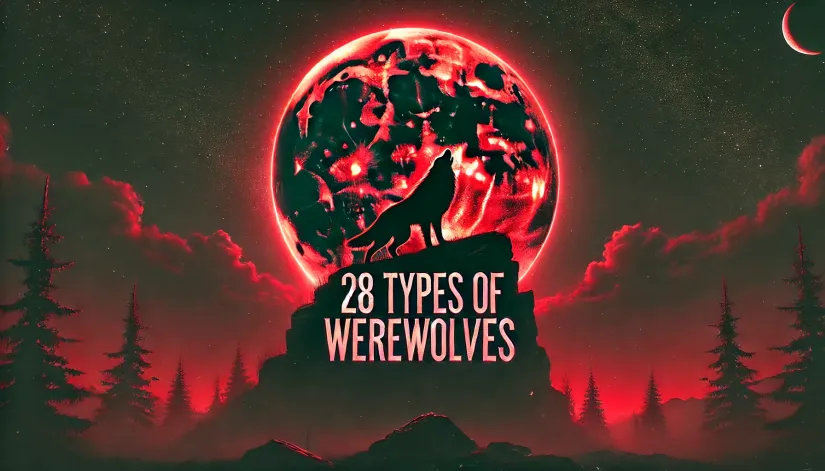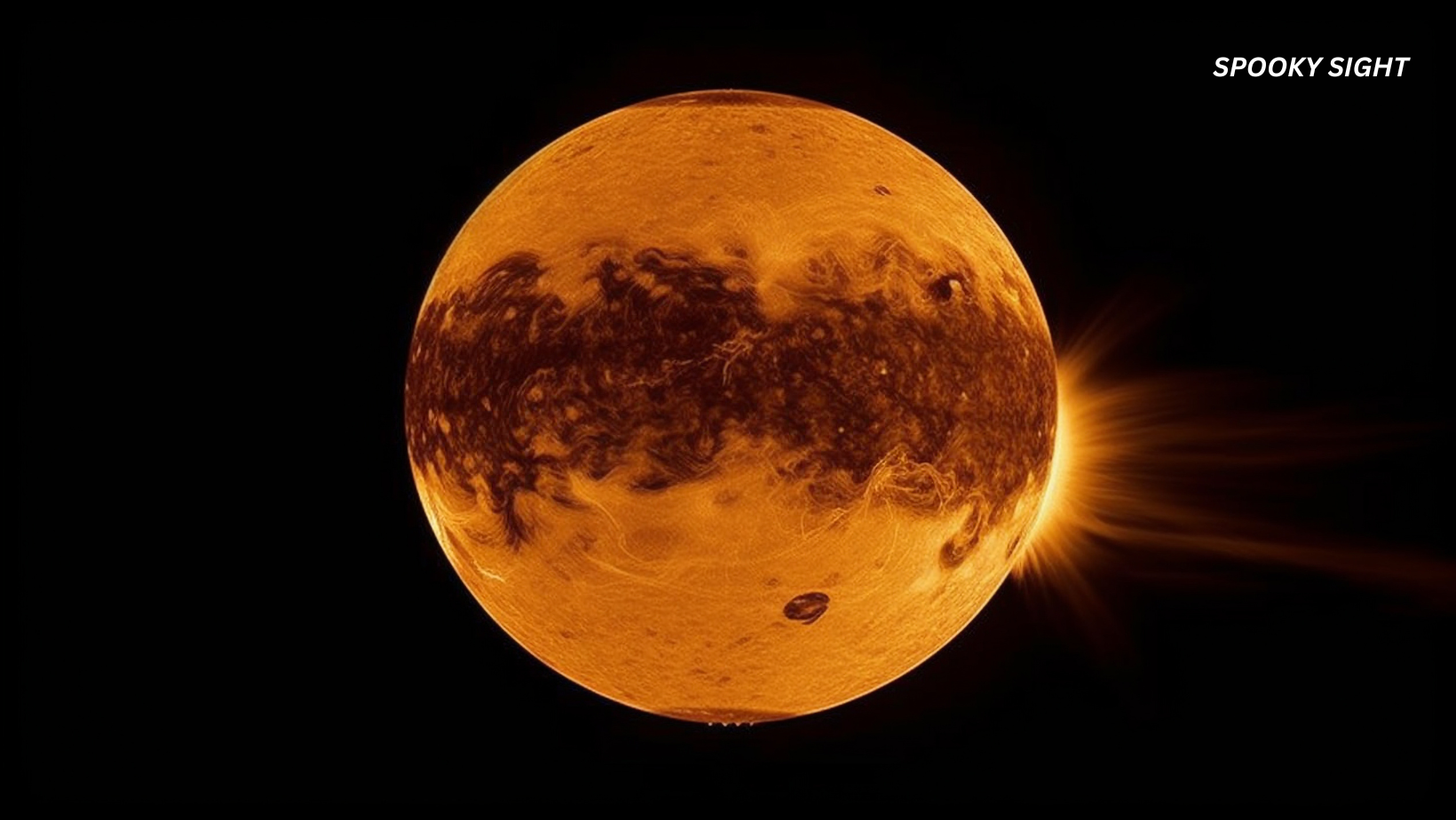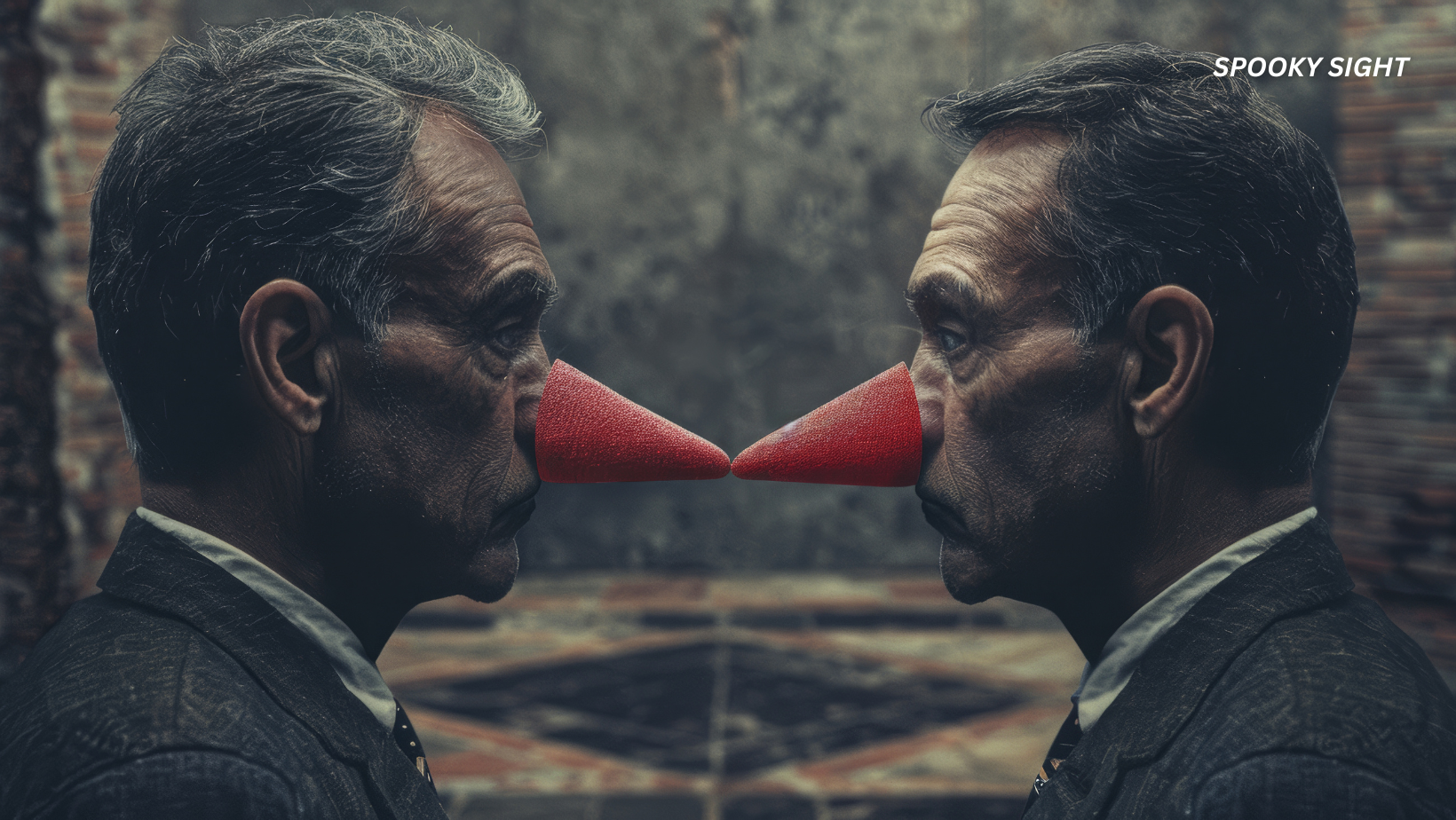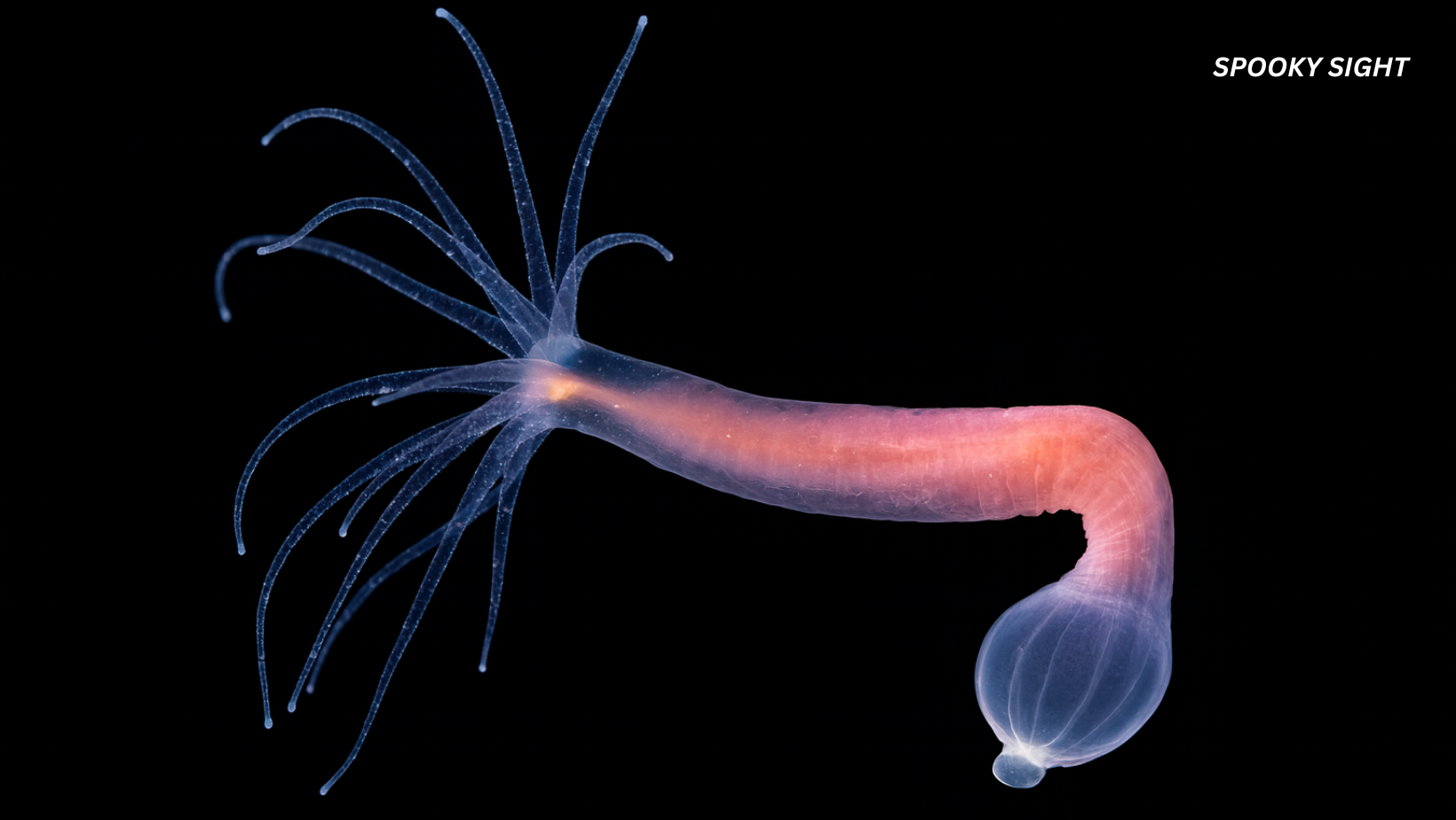Did you know there’s more than one kind of werewolf? It’s true. The types of werewolves out there can be pretty different, depending on where (and when) you look.
Some are fierce beasts that change with the full moon, while others are cursed by tragic spells. Each type has specific stories shaped by old myths and legends passed down from one generation to another.
But hey, werewolves aren’t just creepy monsters from horror films. Nope. They reflect parts of us—our fears, desires, and constant battle to keep our wild side in check.
And that’s just the start. Shapeshifting is everywhere. Almost every culture has creatures that can change their form. Sometimes, they choose to do it. Other times, it’s because of a curse they can’t escape.
In this article:
How We Classify Werewolves
So, how do we even begin to classify all these different werewolves? At SpookySight, we break it down into two main factors: where they come from and what they can do. These fundamentals define each werewolf’s strengths, weaknesses, and unique personality.
But here’s the thing—the mythology is so vast that the werewolves can’t all be classified into just one big category. Just think about how they’ve been portrayed differently across history, culture, and even entertainment.
So, to truly understand these creatures, we had to take a closer look at both old stories and legends and modern pop culture influences.
At SpookySight, we want to give you a complete picture of all the different types of werewolves. We can accomplish that only by breaking down werewolves based on their origins (ancient legends vs. modern creations) and their powers.
Types of Werewolves Based on Origins
In general, one way to classify werewolves is based on their origin. Think medieval France with its terrifying tales of the Loup-Garou. Or the Norse ulfhednar—fearless warriors who could transform into wolves during battle.
Generally, these types of werewolves get their powers through inheritance, a curse, or a bite.
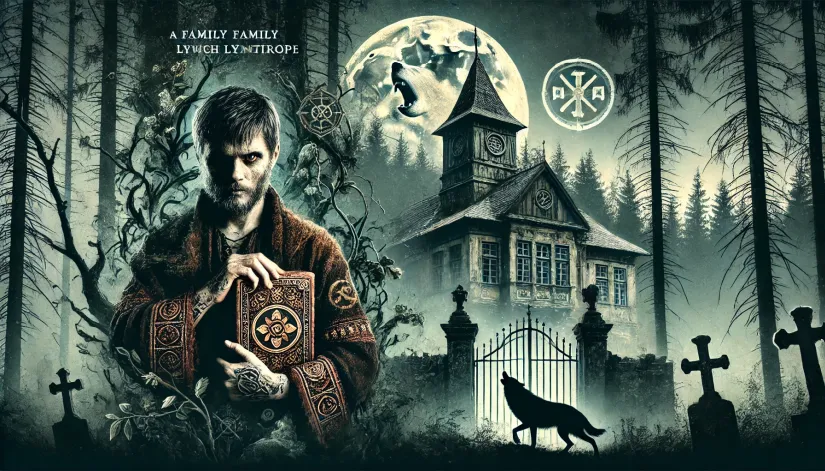
Hereditary
Hereditary Werewolves are born, not made. The idea of werewolf traits being passed down through bloodlines is not new. It goes way back. In fact, the famous Beast of Gévaudan (from 16th-century France) had families rumored to carry a bloodline curse.
However, even if the trait is hereditary, that doesn’t mean that this type of werewolf can just wake up one day and start transforming. The ability may be passed down, generation after generation, but it also has to be unlocked.
You can see this narrative in European folklore, especially in Eastern Europe. In some Slavic legends, noble families allegedly dealt with wolves (or spirits) to gain power—transforming themselves and their descendants.
For example, the Čanturić family from Croatia was rumored to have made a deal with wolf spirits to protect their lands. Or, in 17th-century Poland, the Łowczyński clan allegedly made a pact with dark entities to stay forever powerful and feared.
Being a Hereditary Werewolf is a double-edged sword. Sure, you get superhuman strength, but you’re also tied to your wolf nature.
On the bright side, families with this curse often have better control over their transformations (thanks to their deep connection with the wolf spirit). However, keeping this secret—and living with the burden of the curse—often tears these families apart.
Typically, the first transformation happens during adolescence. It may be triggered by age or other factors (such as strong emotions or extreme stress).
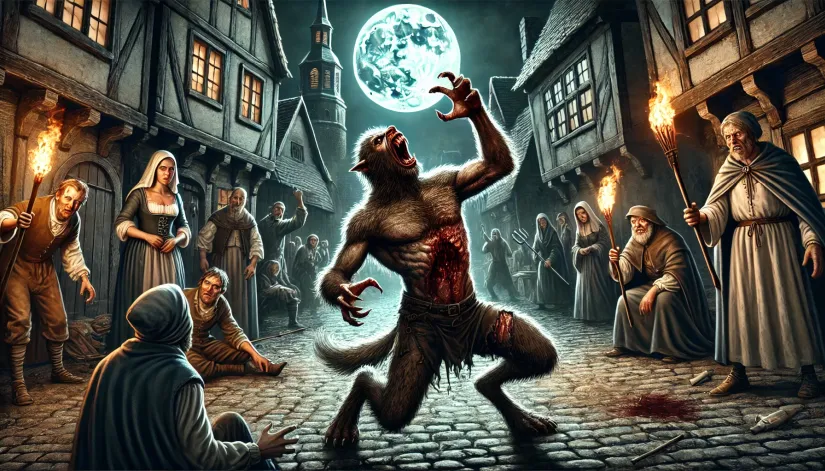
Infectious
The Infectious type of werewolf is the one most people recognize—you turn into a beast after being bitten or scratched by another werewolf. This “plague-like” spread of lycanthropy comes from medieval fears of contagious diseases, like rabies.
The idea of spreading lycanthropy through contact comes from medieval fears of rabies.
A great example is Thiess of Kaltenbrun from 17th-century Livonia (now part of modern-day Latvia and Estonia). Thiess was a self-proclaimed werewolf, and his story is one of the most intriguing in European history.
According to court records from 1692, Thiess claimed that he became a werewolf after being bitten by a man in black, who he believed was a servant of the Devil. Thiess testified that this man cursed him and others, forcing them to transform into wolves.
Unlike most werewolf stories, though, Thiess argued that he used his werewolf abilities for good—claiming that he and other “good werewolves” (more about this type of werewolves below) would descend into Hell to fight witches and demons to protect the crops and villages of the people.
The infectious transformation is violent and painful. Often accompanied by fever, physical changes, and a complete loss of humanity during the first shift.
Sound familiar? That’s because this type of werewolf dominates modern pop culture—think horror movies, books, and TV shows where a single bite changes everything.
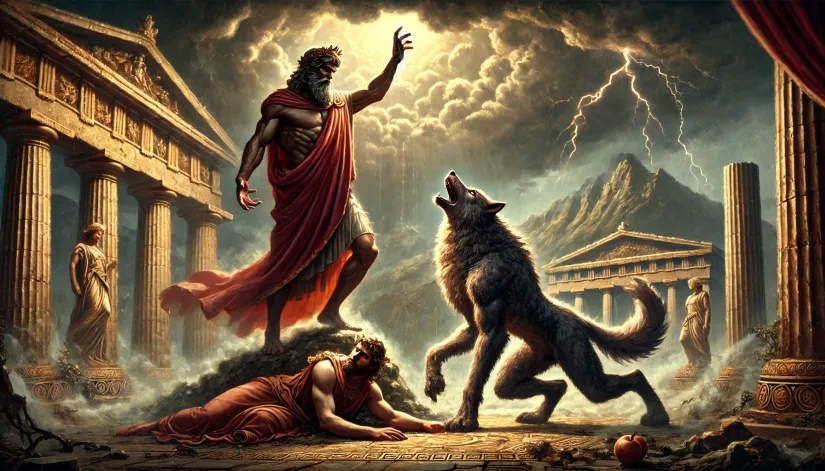
Cursed
The “curse” is a powerful motif in many myths. So much so that many famous werewolves in history are the result of some sort of ancient curse.
Werewolves cursed into their form don’t get any say in the matter. They’re just victims of a supernatural curse. Usually placed on them by a witch, shaman, or some powerful entity.
A good example is Petronius’ 1st-century work, “Satyricon,” where a soldier was cursed into becoming a mindless beast.
Another prime example? King Lycaon. According to Greek mythology, he was cursed by Zeus for serving human flesh to the gods. His punishment was to be permanently changed into a wolf.
Shapeshifter
Shapeshifters are a little different. This type of werewolf can control when they shift. Their transformation is not tied to anything. They can do it when they please it.
And it’s this unique ability to change on command that makes them so powerful and often puts them in leadership roles within werewolf communities.
A good example is the old Norse tales. In many of these stories, the Ulfhednar are warriors who could transform into wolves during battle. Their strength and agility make them almost invincible on the battlefield.
However, you’ll also see shapeshifters in modern fantasy stories, often portrayed as influential characters who balance their wolf instincts with human emotions.
Feral
Feral Werewolves are the ones who’ve completely lost their humanity. They’ve given in to pure animal instincts, becoming wild and uncontrollable.
In Romanian folklore, these creatures are called “Pricolici,” vile individuals who return as ravenous wolf spirits after death.
Feral werewolves are dangerous, acting purely on instinct with no rational thought or empathy. They live to hunt, kill, and satisfy their bloodlust.
SpookySight Note:
Unlike most mythologies, in Native American stories feral werewolves are warrior spirits who’ve lost their purpose, driven to madness by their primal urges.
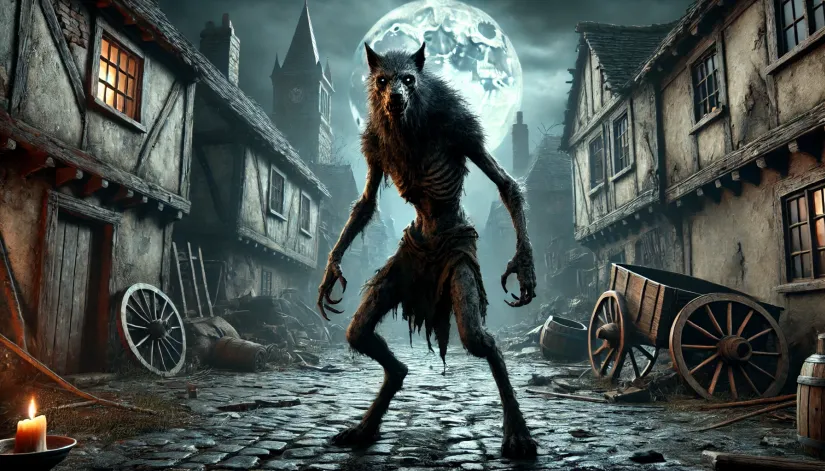
Vargulfs
Vargulfs are one of the most dangerous types of werewolves. They’re even worse than ferals because they’ve not only lost control—they’ve become unstable on both a mental and physical level.
The word “Vargulf” comes from Old Norse. It means “a rogue wolf that kills without eating.” However, in modern lore, this has been adapted to describe beasts that go on rampages, killing without any awareness of their actions.
These werewolves have mentally and physically deteriorated. Most likely due to extreme isolation, prolonged trauma, or exposure to dark magic.
Physically, they are often portrayed with dark eyes and skinny bodies. Perhaps to further highlight their detachment from humanity and the natural order.
Spiritual and Magical Classification
These two are some of the most mysterious and complex types of werewolves. How so? Because, unlike the classic physical transformations, these werewolves tap into supernatural forces that go beyond the ordinary.
Their powers are often tied to rituals, spiritual awareness, or mystical balance, making them both powerful and unpredictable.
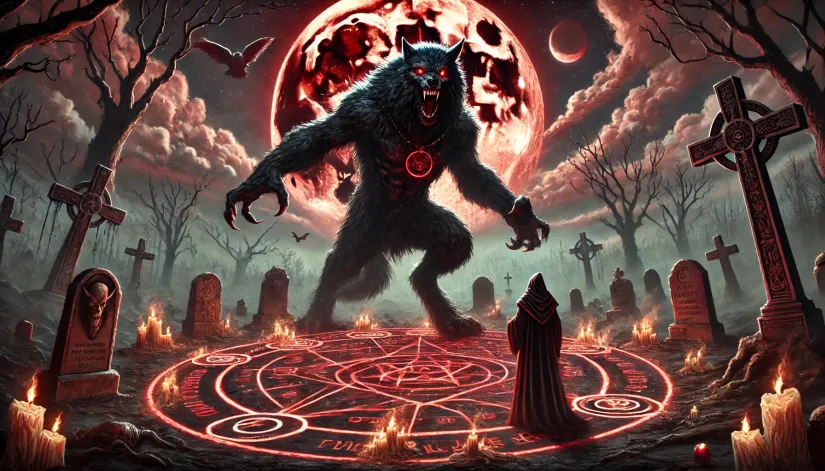
Demonic
Demonic Werewolves can transform through a dark pact with a demonic entity. These are not your typical cursed or bitten werewolves. Instead, they willingly give up their humanity in exchange for supernatural power.
This concept mirrors the Faustian bargains of medieval Europe, where people traded their souls for dark magic.
One infamous example is Peter Stumpp (the “Werewolf of Bedburg“), who in 1589 claimed that the Devil had given him a magical belt that allowed him to transform into a wolf. Stumpp’s case became legendary during the werewolf trials.
How can one do these pacts? Well, they often require specific rituals. And the right time and place (like under a blood moon or at a crossroads).
Unlike the types of werewolves mentioned above, the Demonic ones are driven by pure evil, using their power to spread fear and destruction. They have no desire for redemption.
To make things worse, a Demonic werewolf can be much stronger than the average beast. That’s because, on top of their superhuman strength and agility, they can sometimes wield dark magic (like manipulating shadows or summoning fear to paralyze their enemies).
Astral
Astral Werewolves stand out because they transform on the astral plane rather than in the physical world. To do this, they enter a deep meditative state or perform a ritual that lets their spirit leave their body. In some traditions, they use special herbs—or symbols—to help with the process.
The concept of spiritual journeys originates in various shamanic traditions, where practitioners would enter the spirit world and take on animal forms for protection or guidance.
Similarly, during the European witchcraft trials, some women were accused of spiritually transforming into wolves to commit evil acts.
In Norse mythology, seiðr was a form of sorcery that allowed practitioners (often women, known as völur) to interact with the spirit world. Some accounts suggest that seiðr practitioners could send their spirits out of their bodies, potentially changing into animals (like wolves).
Magical or Enchanted
This type of werewolves gain their powers through spells, enchanted artifacts, or blessings from powerful magical beings.
Unlike Hereditary or Cursed Werewolves, magical ones rely on external objects or rituals to activate their abilities. Think of items like the “Wolfstone Amulet” or “Lunar Staff,” which allow users to channel transformative magic.
In old Nordic tales, people believed wearing a wolf pelt could give the wearer the ability to transform. And even during the European werewolf trials several accused werewolves claimed they could change shape using enchanted items.
Jean Grenier, a teenager in 17th-century France, famously confessed to using a wolf skin to transform. He claimed the Devil had given him a magical wolf pelt, which allowed him to become a wolf and attack children in the region. This case terrified locals and became one of the most well-known werewolf trials of the era.
Another example is Gilles Garnier, a 16th-century French hermit accused of being a werewolf. According to his confession, Garnier used a magical ointment that allowed him to turn into a wolf and hunt humans.
Alignment-Based Types of Werewolves
Werewolves can also be classified based on their alignment and approach to morality. In this classification, we look at how they use their powers—for good, evil, or somewhere in between. These types range from those who thrive on chaos to those who seek balance or even redemption.
It’s all about how they choose to handle their transformations and what they do with the power they’ve been given.
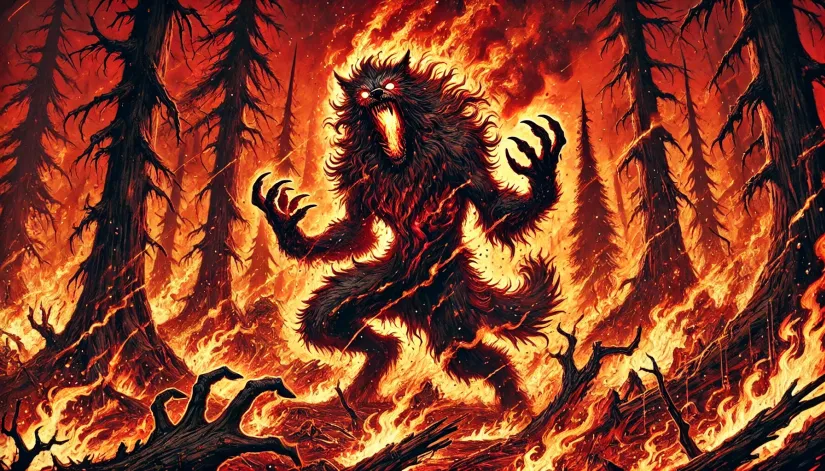
Chaotic Evil
Chaotic Evil Werewolves embrace their dark side without any moral restraints. They live for chaos and destruction, relishing the thrill of the hunt. For them, their abilities are a gift—one they use to create fear and terrorize anyone unlucky enough to cross their path.
Unlike other types of werewolves, these ones don’t really struggle with their dual nature. In fact, they love their monstrous side and let it run wild. They symbolize raw darkness and untamed primal urges.
On top of that, they often have abilities beyond the standard werewolf traits. For example, some can control fire, summoning flames to leave a trail of devastation behind them. Others can let out a terrifying roar that freezes their victims in place, weaponizing fear itself.
And here’s something else to think about: they rarely work alone. Despite being really powerful, they can still form temporary alliances with dark sorcerers (or demons) to further enhance their chaotic nature.
In many folk tales, Chaotic Evil Werewolves target small villages, attacking the weakest—women, the elderly, and children—leaving behind horror and destruction.
Neutral
Balance. That’s the word that defines Neutral Werewolves. They want to coexist with humans, trying to control their transformations and prevent harm. They’re not interested in power or chaos. Instead, they focus on finding peace and managing their dual nature.
It’s also worth mentioning that most Neutral Werewolves don’t want to transform. They’re reluctant, sometimes going to great lengths to isolate themselves or even use restraints during a full moon to avoid losing control. Others turn to herbal remedies or spells to dull their senses when they feel a transformation coming on.
But the struggle is constant. They have to balance their human side with their animal instincts. Because of this, many choose to live in remote areas, away from people.
But even then, they need support—often depending on close friends or family to help lock them up or keep them away from society during the full moon.
This dependency creates a dual conflict: the need to protect others versus their desire for isolation and freedom.
Good
Believe it or not, not all werewolves are monsters. Good Werewolves use their powers to protect and serve. They often take on the role of guardians, defending their loved ones or fighting against evil forces, including other supernatural threats.
They also have a strong moral compass. In fact, many Good Werewolves patrol their communities during the full moon, using their heightened senses and strength to keep their neighborhoods safe.
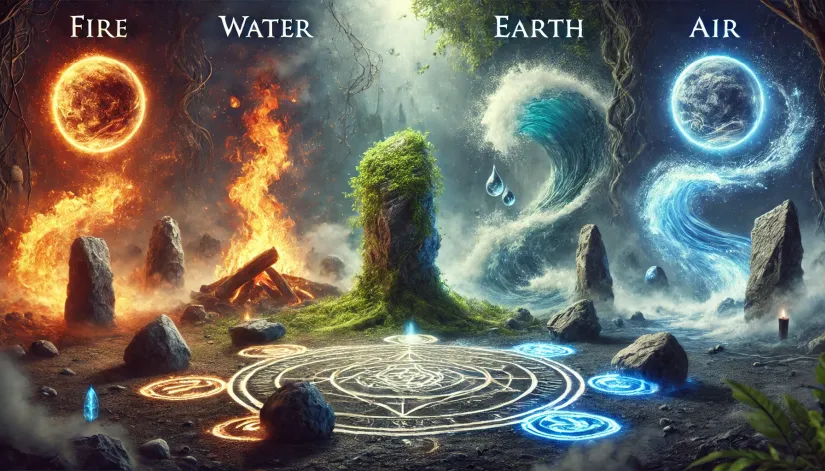
Classification Based on Governing Element
Speaking of unique types of werewolves, Elementals draw their power from the natural elements. However, unlike traditional werewolf lore (from myths and legends), Elemental Werewolves are a more modern creation.
You’ll find them mostly in fantasy books, games, and movies, where supernatural creatures are often given new powers tied to the elements—fire, water, earth, and air.
It’s also important not to confuse these types of werewolves with elementals from traditional mythology. Elementals are mythical beings that personify the elements—like fire spirits (salamanders), water spirits (undines), earth (gnomes), and air (sylphs). Two different things.
Fire Werewolves
Fire Elementals are all about heat. These werewolves can control flames and handle extreme temperatures like it’s nothing. They can summon fire at will—igniting their claws or even breathing fire in battle (yep, like dragons).
Water Werewolves
On the flip side, Water Elementals are totally at home in the water. They can breathe underwater and are natural swimmers, quickly moving through oceans, rivers, and lakes. They can also manipulate water, using it to create massive waves, shields, or even whirlpools when needed.
Their connection to water makes them adaptable and calm under pressure. Which are two great qualities for some protectors of the coastlines or sacred bodies of water—like the Loch Ness (see the Loch Ness Monster) or the Baltic Sea.
Earth Werewolves
Earth Elementals are like the “tanks” of the werewolf world—tough, strong, and nearly impossible to knock down. These werewolves are guardians of the land, often seen protecting forests, mountains, or other sacred natural spaces.
Their ability to control the earth means they can build barriers, cause tremors, or even create rocky armor to boost their defenses—strong and steady as a rock (literally).
Air Werewolves
Air Elementals are all about speed and agility. This type of werewolf can manipulate the wind to throw their enemies off balance or glide effortlessly over obstacles. Some legends even say they can whip up small tornadoes or vanish in a puff of wind, making them incredibly hard to catch.
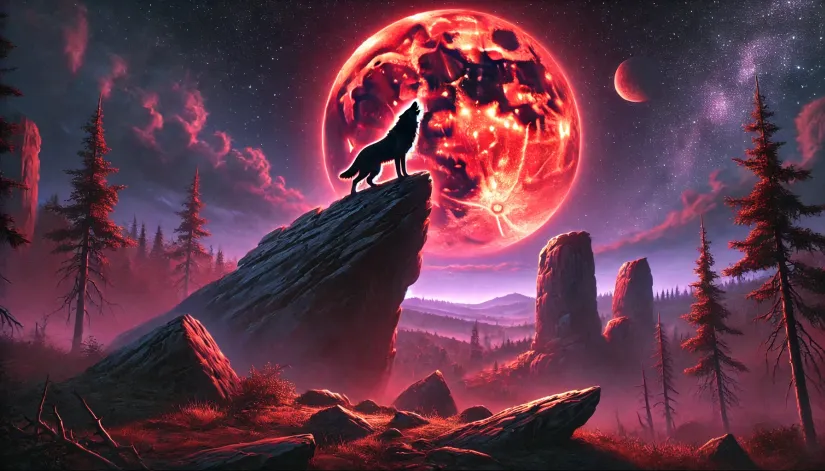
Classification Based on Celestial Events
Now, let’s get into the types of werewolves directly tied to the cycles of the moon and other celestial events. These “species” have a remarkable connection to lunar phases, which grants them unique abilities.
Depending on the moon type, they might become more powerful or—on the flip side—more dangerous.
Moon-Dependent
When you think of werewolves, you probably think of the full moon, right? Well, that’s precisely where Moon-Dependent Werewolves come in.
These are the most classic types of werewolves, transforming in sync with specific lunar phases—whether it’s the full moon, a blood moon, or even a rare lunar eclipse.
Most stories focus on the full moon, where werewolves have no control over their transformations. They shift involuntarily, often becoming wild and dangerous under its light.
But some werewolves (like those tied to a blood moon) may experience even more intense transformations. They’re stronger, faster, and often more violent—losing all sense of control.
Lunar-Blessed
Now, Lunar-Blessed Werewolves are a whole different story. Unlike Moon-Dependent ones, their transformations are seen as a blessing, not a curse. They’re gifted with unique powers during certain lunar phases, making them rare and highly respected.
Plus, they don’t lose control. In fact, the lunar phases give them enhanced strength, heightened senses, and even protective abilities. They might gain special powers under the full moon to shield others or sense threats before they happen.
Hybrid and Modern Types of Werewolves
These creatures have evolved beyond traditional folklore in today’s fantasy and pop culture world. Now, we see new, exciting types of werewolves that blend the classic with newer supernatural elements.
Hybrids
Hybrids are rare and powerful creatures, blending the abilities of werewolves with other supernatural beings—most often vampires. These hybrids take on the strengths of both species, like super speed, enhanced senses, and the vampire’s immortality. Sounds like the ultimate combo, right?
But there’s a catch. Along with these strengths, hybrids also inherit the weaknesses of both species—such as a vulnerability to silver and an aversion to sunlight.
In pop culture, hybrids are usually portrayed as outcasts—caught between two worlds and accepted by neither. They often struggle to find their place, rejected by both vampires and werewolves. But despite the loneliness, their mix of abilities makes them incredibly formidable, whether they choose to be heroes or villains.
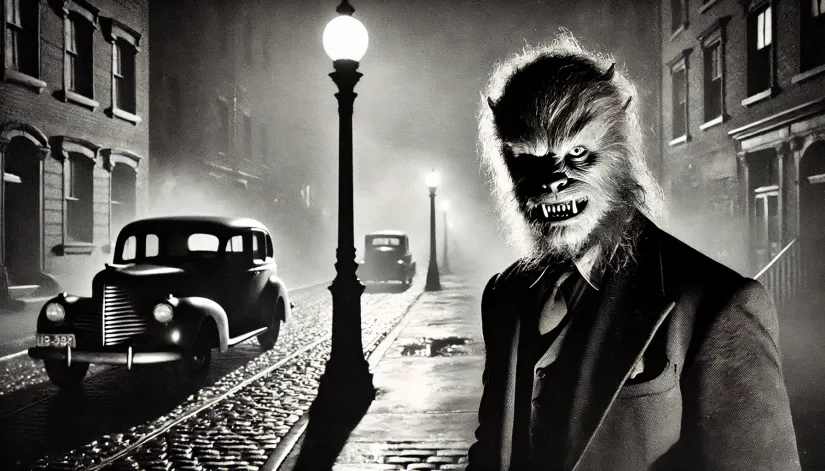
Manwolf
Manwolves are another interesting twist on the traditional stories. This type of werewolf was popularized by Hollywood and features a more controlled, but still terrifying, transformation.
Unlike fully transforming into a wolf, Manwolves keep many of their human features.
One of the earliest examples of the Manwolf in Hollywood is Larry Talbot from The Wolf Man (1941). Larry transforms into a wolf-like creature, but he retains his upright stance and many human features instead of a full wolf.
Another example is the The Howling (1981). The werewolves here don’t fully transform. Instead, they take on a more human-wolf hybrid form, keeping many of their human characteristics.
Lycanoid
Speaking of the Hollywood influence in creating new types of werewolves, let’s talk about Lycanoids.
These modern werewolves are closer to ghouls from vampire stories than the full-on transformation. Lycanoids keep their human form but develop wolf-like traits—sharp teeth, claws, and enhanced senses.
You’ll find them in many modern TV shows, books, and games where werewolf transformations don’t always follow the traditional full moon rules but instead explore this balance between human and animal traits.
The Lycans in the Underworld movies are perfect examples of Lycanoids. In The Witcher series, werewolves like Nivellen (in the Netflix series) or werewolf enemies (from the video games) often appear in a more human-wolf hybrid form. They keep their human intelligence and traits but struggle with their bloodlust and loss of control during their transformations.
Shadow Werewolves
Shadow Werewolves are some of the rarest types of werewolves, and they bring a whole new level of mystery to the myth.
These beings can blend into shadows, moving unseen and unheard. Unlike the other types, they aren’t entirely physical—they’re part spectral, making them incredibly hard to track or fight.
Ancient Werewolves
Finally, we have Ancient Werewolves, creatures that have lived for centuries, often due to magic or a long-lasting curse.
What’s fascinating about them is how they have experienced generations of conflict, gaining immense knowledge (and powers).
But living for so long has its price—intense loneliness and the burden of endless existence.
They are wise, but their years have either made them kinder or colder. Some may mentor the young, acting as guides through difficult transformations and moral choices. Others become powerful enemies, hardened by time and driven by bitterness.
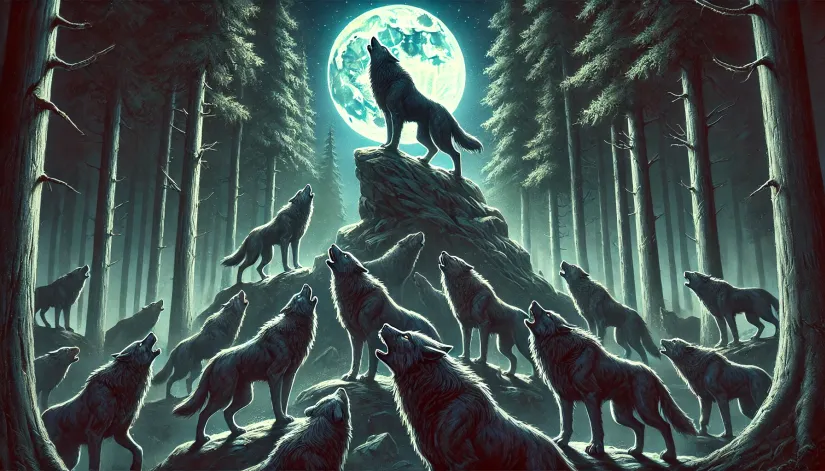
Classification Based on Pack Hierarchy
Werewolves, much like real wolves, operate within a strict pack hierarchy. This hierarchy isn’t just about strength; it defines each member’s role, responsibilities, and status. Understanding these roles helps explain how packs maintain order, ensure survival, and navigate power dynamics.
Let’s break down the key ranks within a werewolf pack:
Alphas
At the top of the pack are the Alphas. Alphas are the most dominant and powerful members, responsible for leading the pack and making crucial decisions.
They’re often portrayed as the strongest physically. They may have special abilities that set them apart—such as enhanced control over transformations or the ability to bestow or revoke werewolf powers on others.
Alphas not only lead in battle but also maintain order within the pack, resolving conflicts and organizing hunts.
Typically, a pack has both an Alpha Male and an Alpha Female. The female is sometimes referred to as the Luna, and she’s seen as the pack’s mother, supporting the Alpha Male and nurturing the pack’s younger members.
Betas
Second in command are the Betas. These are the pack’s enforcers, responsible for carrying out the Alpha’s orders and ensuring pack discipline.
Typically, Betas are often the strongest after the Alpha and play a vital role in protecting the pack from threats, particularly during hunts. In some cases, a Beta may be chosen by the Alpha. Still, they’re usually born into the role (often as the children of the previous Alpha or Beta).
Gammas
Gammas rank just below Betas and typically act as the pack’s warriors. They’re responsible for training the other pack members in combat and often serve as strategists during battles. Gammas might also oversee the protection of the pack’s territory.
Though they are less dominant than the Alphas and Betas, Gammas still hold significant influence and respect within the pack due to their combat prowess.
Deltas
While not always mentioned as a type of werewolf, Deltas are sometimes portrayed as third in command. They are often seen as lieutenants to Betas and help protect the pack’s territory.
In rare cases, Deltas may be responsible for guiding and mentoring younger pack members.
Omegas
At the bottom of the hierarchy are the Omegas. Often seen as the outcasts or the weakest members of the pack, Omegas have little authority and are usually submissive to everyone else.
They tend to fulfill more menial roles within the pack, sometimes as scapegoats for the group’s frustrations. Despite their lowly status, Omegas play a critical role in maintaining harmony within the pack by diffusing tension and conflicts through their submissive behavior.
In some werewolf lore, Omegas also have unique abilities tied to their resilience or ability to remain independent, as they are often the loners within the pack.

